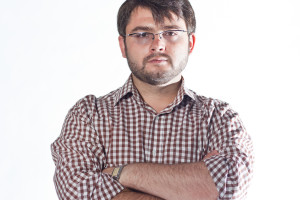Romanian Literature as World Literature
Only by taking on literary history will we be able to speak of Romanian literature as a world literature.

Igor is a PhD researcher in the Art History department of the National University of the Arts Bucharest / UNARTE, with a dissertation titled Political avant-garde. The other face of Romanian avantgarde in social, political and economic documents and coordinated by Prof. Ruxandra Demetrescu. He writes critical texts in magazines and newspapers such as CriticAtac, Art Dance News, Art Ploshadka, and Idea art + society. He has curated several exhibitions of modern and contemporary art and is currently developing the project The Avantgarde revisited. European avantgarde in the Romanian National Archive of Films at the Romanian Cinematheque. He edited together with Ion Manolescu the anthology 1984. The Last generation of Romanian comunism (UNIBUC, 2008), was part of the literary and visual arts project Rubik (Polirom, 2008, edited by Simona Popescu) and is a contributor to the collections Critic Atac. Antologie I (Cartier, 2011, edited by Vasile Ernu), See what we do! (Pionier press, 2013, edited by Arina Stoenescu), Infranegrul (Aius, 2014, edited by Petrișor Militaru).
igormocanu.wordpress.comOnly by taking on literary history will we be able to speak of Romanian literature as a world literature.
Pepluspatru recently published an important book for those who are interested in the evolution of the Romanian transcultural modernism and the urban and architectural history of Romanian tourism.
When a show about the historical Romanian avant-garde becomes a public scandal - for all the wrong reasons.
During the second half of January, the Center for Visual Arts hosted the second edition of The National Painting Salon awards exhibition under the patronage of the Romanian Artists' Union.
Interview with Andreiana Mihail.
The Group of Czech and Slovakian Surrealists truly gives another air to the discussions about the historical avant-garde.
About a wall built to keep unwanted people from the city, and where art came into all this.
25 years after the December 1989 events, a group of Romanian sculptors remember, discuss and sometimes argue with the recent past. An interview with the show's curator, Ioana Ciocan.